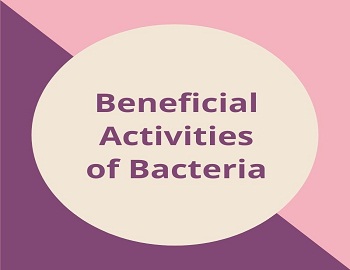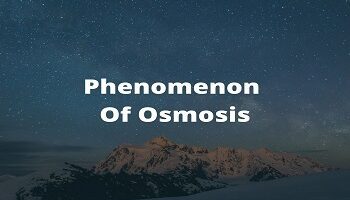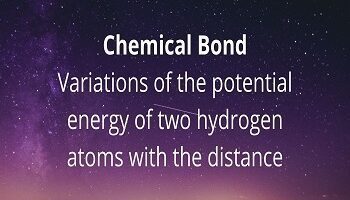Beneficial Activities of Bacteria:
(1) Mineralizers- Living organisms take inorganic metabolites from the physical environment. Some of them are used in the manufacture of organic metabolites. On the death of living organisms, these materials are returned to the environment. Microbes (and fungi) gradually decompose the dead remains of living beings and transform them into the same kind of inorganic materials which were withdrawn from the environment. Thus continuity of life depends on the return of these minerals to the environment. Thus the microbes work as mineralizers. If these compounds, somehow, remain in the dead bodies of living beings, the crucial inorganic materials for autotrophs would all be locked up in the remains of the dead and life will extinct from the earth except a few autotrophic bacteria.
(2) Sewage Disposal- Sewage is taken to special tanks where organic wastes are decomposed by bacteria and fungi. Decomposed sewage is filtered and the filtrate is used as manured water for agriculture.
(3) Pollution Control- Pseudomonas degrades a variety of man-made and natural organic pollutants, including petroleum wastes. Flavobacterium can decompose 2, 4-D. Persistent pollutant DDT is similarly decomposed by Acetobacter aerogens.
(4) Nitrogen Fixers- Though nitrogen forms four-fifths of the atmosphere, but green plants can not make use of this free nitrogen. Nitrogen required by the plants for the manufacture of proteins is absorbed from the soil in the form of nitrates.
The organic matter of dead animals and plants is broken down by purifying bacteria into ammonia and ammonium compounds. Nitrosomonas bacteria oxidize these compounds into nitrites which are further converted into nitrates by Nitrobacter bacteria.
Denitrifying bacteria like Bacillus denitrificans decompose ammonia and nitrogen into free nitrogen. The free nitrogen is fixed by the nitrogen-fixing bacteria, Clostridium and Azotobacter, living in the soil and Bacillus radicicola living in nodules of legume plants.
Blue-green algae like Anabaena and Nostoc also fix free nitrogen of the atmosphere. Tolypothrix tenuis can fix nitrogen at the rate of 1,000 kg per acre per year thus increasing rice production by about 20%.
(5) Cycling of Material- Bacteria are the main organisms of decay. They decompose the dead bodies of plants and animals and convert their complex compounds into simpler substances. Example- carbon dioxide, water, nitrates, sulfates, etc. These are again taken by the green plants in the synthesis of complex organic compounds. In this way bacteria help in the cycling of matter otherwise, life would have come to end for want of these materials.
Aquatic bacteria also recycle essential nutrients. Photosynthetic sulfur bacteria in the muddy bottoms of the water provide a valuable service by using hydrogen sulfide produced by the sulfide bacteria.
(6) Manure and Gobar Gas- Animal and human wastes, water weeds and other organic wastes are allowed to undergo anaerobic breakdown or fermentation. The products of the latter are changed to methane by methanogens. The same is collected and used as fuel gas. Simultaneously the organic wastes are changed to manure.
(7) Symbiotic Forms- Symbiosis in its broad context denotes any condition in which two different species live together in intimate and meaningful association. Several symbiotic bacteria are found in nature living in symbiotic relations with man and other animals.
- Symbiotic Bacteria in Humans- Many species of bacteria colonize our skin, digestive tract, upper respiratory tract and other body openings. The number of bacteria that inhabit the lower digestive tract is so great that nearly half the dry weight of faeces is bacteria. Some types of bacteria are our mutualistic partners. In exchange for food and shelter they provide us with vitamin K and some of the vitamins B. They prevent the multilication and spread of pathogens and protect us from possible diseases.
- Bacteria and Food-Humans take a good advantage of the abilities of specific strains of bacteria to produce chemicals such as ethanol and acetic acid (vinegar). Butter milk and yogurt are produced by cultivating certain lactic acid bacteria in milk. Bacteria are inoculated into cream to improve the flavour of butter. Numerous varieties of cheese can be produced from the same batch of milk by the action of different types of bacteria.
(8) Ensilage- It is preserved fodder. Freshly chopped fodder is placed in a silo, sprinkled with salt and molasses to stimulate bacterial activity. Bacteria soften fodder and enhance its nutritive value. They also produce lactic acid which preserves fodder.
(9) Commercial Uses of Bacteria- To obtain fibres of flax, hemp and jute, the retting of stems of these plants are done. In this process, the stems are kept under water for some days when the stem begins to decay.
Fibres are separated from the stem on thrashing. The process of separation of fibres is known as retting. This process is carried by Clostridium butyricum.
Bacterial fermentation is employed in developing flavour and taste in tobacco leaves. Bacteria are also employed in the curing of tea leaves.
Some bacteria are used in removing hairs from the skin of animals and the process is known as the tanning of leather.
(10) Role in Medicines.









Comments (No)